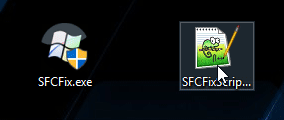I take it you're away from the forum or busy with otherd clients, no worries. I tried something else after I found a directive to start the windows update service before running dism restorehealth so I attempted to start it as you can see below upon which it already had been so that was not it, then i started component cleanup then i ran the restorehealth command which failed said as you can see below which is somewhat different from what we have seen before if only slightly, the exception is that this time there is a direct reference to the fact that the component store is broken beyond repair, if that is the case I noted before that the windows repair tool you sent me has the option to fix the component store, is there any benefit to making that attempt and if so would you please provide instructions for doing so, I don't want to do without your input and guidance. I have uploaded the zip file with dism and cbs files as well as the cpadmin content which I will also post here. I am more worried than ever that this is what trashed my Asus computer still in the shop, I am extremely hesitant to try and do a recovery as this I fear is what rendered the recovery environment on the Asus dysfuntional, it seems to me that what's wrong here has some effect on the "RE"
dropbox link:
https://www.dropbox.com/s/hswqjuqvooek5sz/dism.zip?dl=0
start windows update diirective and cdadmin contents below
When it says the source files can't be downloaded that means it can't obtain the image from
Windows update.
Sometimes you can fix this by running the following command in an elevated command prompt.
Code:
net start wuauserv
If the code works it should say "The Windows update service is starting" then say " The Windows
update service started successfully" after that try running the DISM repair command again.
If none of this works then the system might be fixed by running a Refresh or Reset but that takes
you back to square one.
Microsoft Windows [Version 6.2.9200]
(c) 2012 Microsoft Corporation. All rights reserved.
C:\windows\system32>net start wuauserv
The requested service has already been started.
More help is available by typing NET HELPMSG 2182.
///////////////////////
Microsoft Windows [Version 6.2.9200]
(c) 2012 Microsoft Corporation. All rights reserved.
C:\windows\system32>net start wuauserv
The requested service has already been started.
More help is available by typing NET HELPMSG 2182.
C:\windows\system32>NET HELPMSG 2182
The requested service has already been started.
C:\windows\system32>Dism /Online /Cleanup-Image /StartComponentCleanup
Deployment Image Servicing and Management tool
Version: 6.2.9200.16384
Image Version: 6.2.9200.16384
[==========================100.0%==========================]
The operation completed successfully.
C:\windows\system32>Dism /Online /Cleanup-Image /RestoreHealth
Deployment Image Servicing and Management tool
Version: 6.2.9200.16384
Image Version: 6.2.9200.16384
[==========================100.0%==========================]
The restore operation failed. Either the repair source was not found or the comp
onent store cannot be repaired.
Error: 0x800f081f
DISM failed. No operation was performed.
For more information, review the log file.
The DISM log file can be found at C:\windows\Logs\DISM\dism.log
C:\windows\system32>





